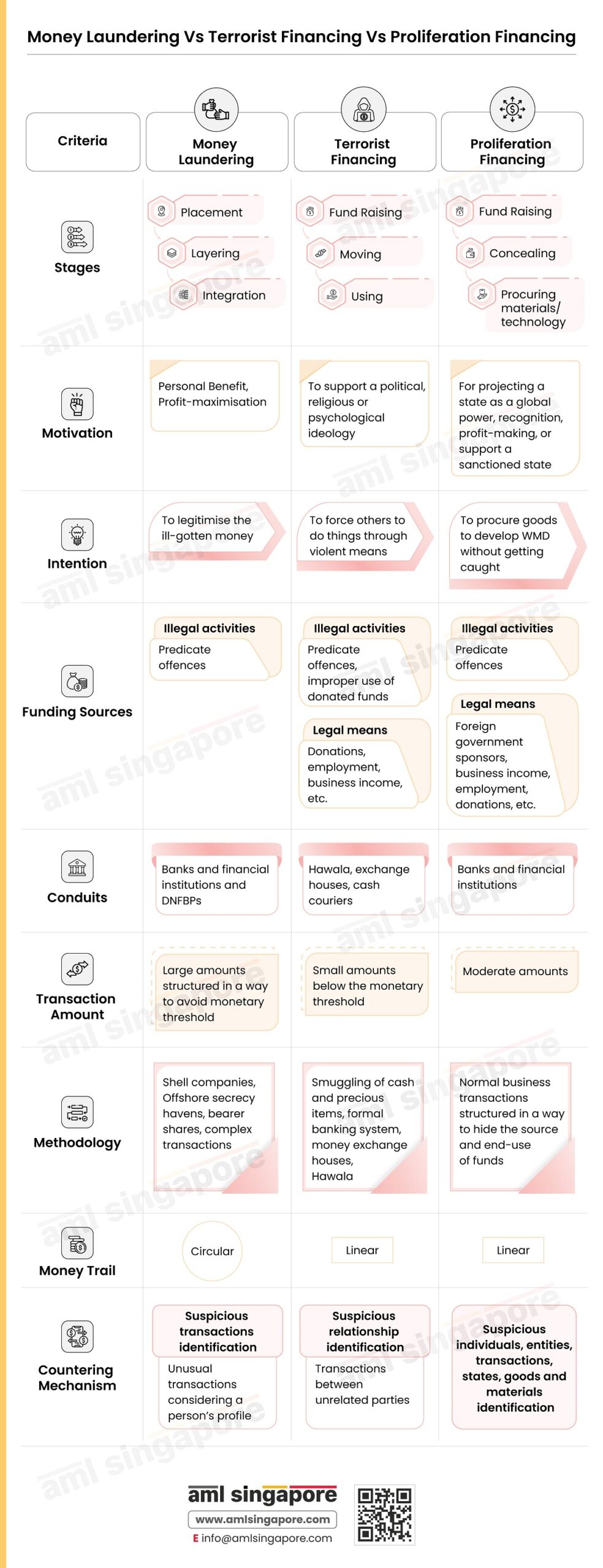Money Laundering Vs Terrorist Financing Vs Proliferation Financing
Money Laundering Vs Terrorist Financing Vs Proliferation Financing
Money Laundering, Terrorist Financing, and Proliferation Financing are used collectively, but there are key differences in their stages, motivation, intention, funding sources and overall approach.
Money Laundering is the process used to make the illegal proceeds money earned by predicate offences appear legitimate. The process allows the money launderers to use the money freely, similar to if money routed through the proceeds were generated from legitimate work. The money launderers use this process to hide the source of illegal earnings, avoid prosecution, and conceal their assets. It’s a circular process where the money put for laundering comes back to the person.
Terrorist financing, as the name suggests, is the financing of terrorists or terrorist organizations. It is usually done when the financer supports the same ideology as the organization. Terrorist financing can occur through funds obtained from legal as well as illegal sources, such as business profits, charitable organizations, and predicate offences. Unlike money laundering, it’s a linear process where the money doesn’t return to the financer but gets used for terrorist activities.
Proliferation financing is the act of financing or providing services for activities (such as creation, storage, transportation, etc.) related to weapons of mass destruction. It is one of the most serious threats to global security. Hence, it is necessary for organizations to take adequate action to mitigate associated risks.
The AML Singapore’s infographic, Money Laundering vs Terrorist Financing vs Proliferation Financing, compares all three financial crimes by taking various aspects into consideration, such as their stages, intentions, funding sources, etc. Delve into the infographic to learn more!

